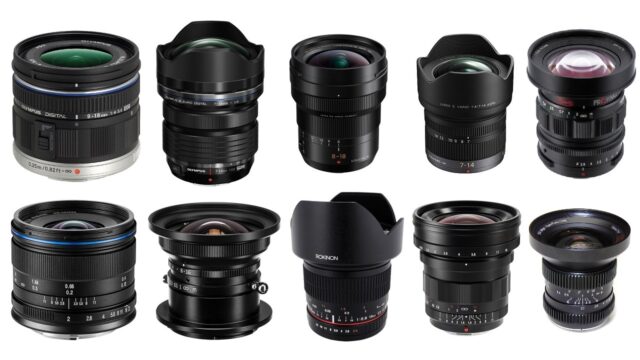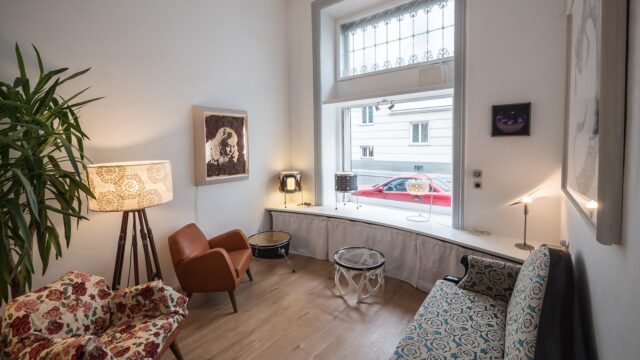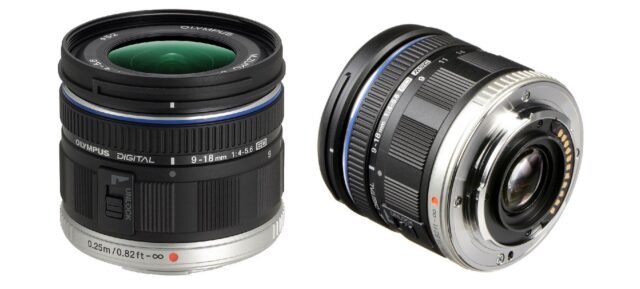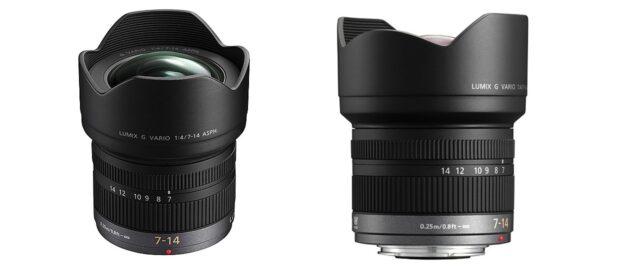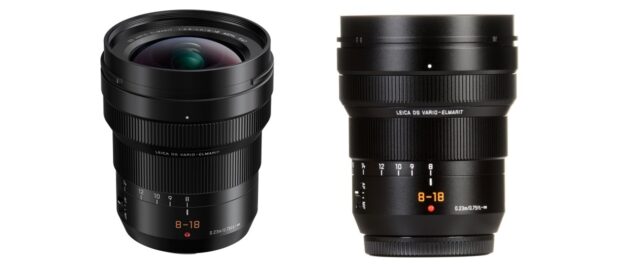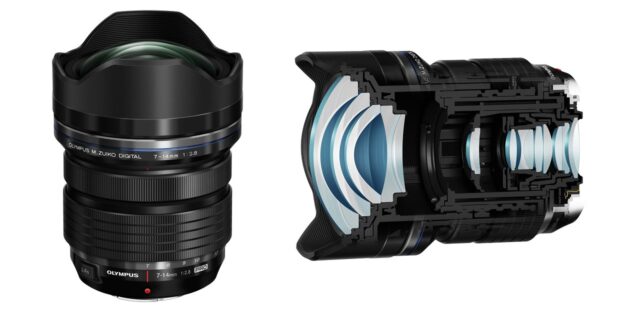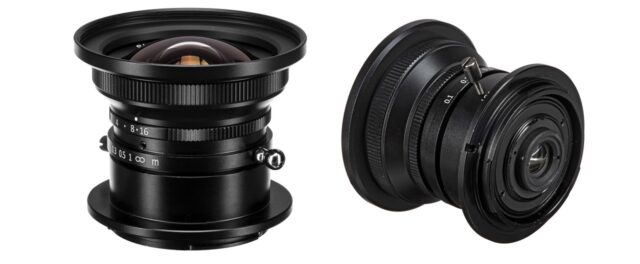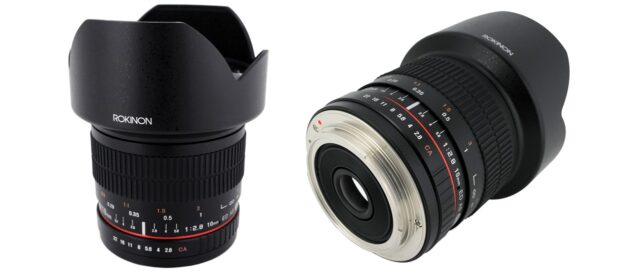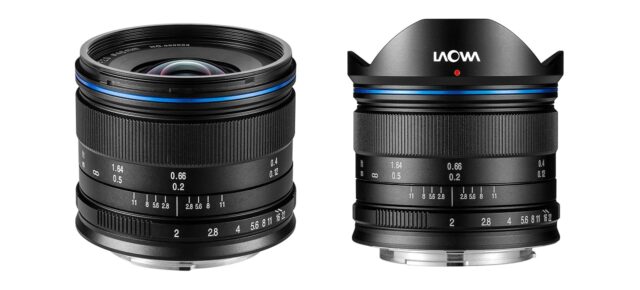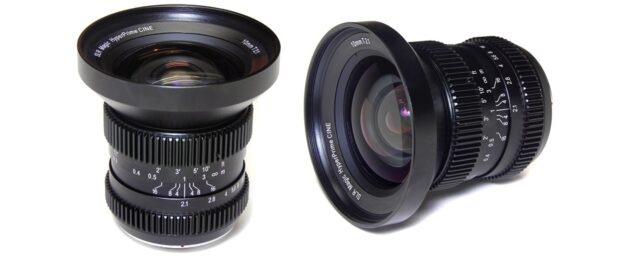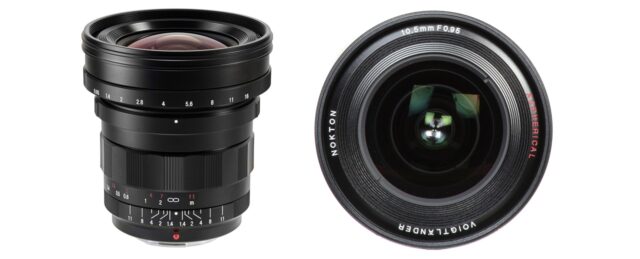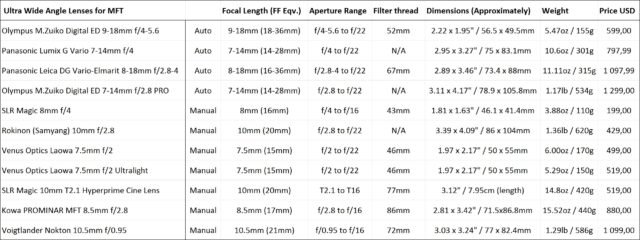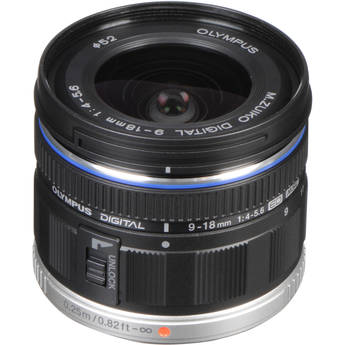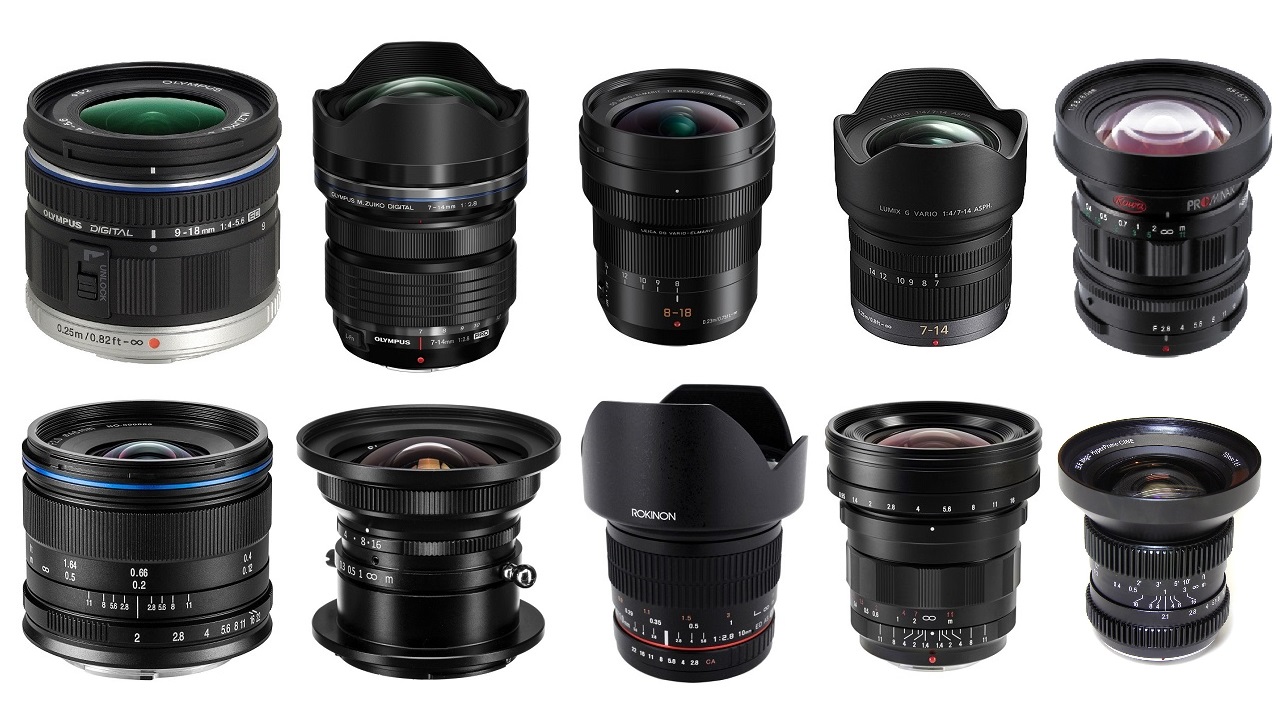
If you are in search of a native ultra wide angle lens for a MFT camera, this article will give you an overview and hopefully some help with deciding. I did some research and found 10 available solutions with a focal length of less than 12mm (24mm full frame equivalent). This article includes both autofocus zoom lenses and fully manual prime lenses.
I decided to compose this article, as I very often meet people – both online and offline – asking for some advice on which ultra wide angle lens they should choose for their micro-four-thirds (MFT) camera and why. The MFT system is currently being pushed in the video field mostly by the GH line of cameras by Panasonic. Now, Blackmagic also decided to hop into the MFT game with their new Pocket Cinema Camera 4K, which should start shipping soon, in September 2018. Also DJI uses a MFT ecosystem with their Zenmuse X5S camera gimbal for the Inspire 2 drone.
Many people use speed boosters with their MFT cameras to lower the crop factor and make the use of other lenses (mostly Canon EF mount lenses) possible. I decided to focus on native MFT lenses in this article, as they have some advantages over the speed booster solution. They are smaller and lighter and usually have faster and more reliable autofocus, than a speed booster solution (AF lenses only). Also, some filmmakers exclusively use native MFT lenses and don’t want to spend additional money on a speed booster.
Why Include an Ultra Wide-Angle Lens in a Kit?
Lenses generally are considered as ultra wide-angle when the focal distance is under 24mm (35mm sensor equivalent). I did stick to this rule in my article and have only chosen native MFT lenses, which have less than 12mm focal distance (24mm full frame equivalent, 2x crop factor). I have also decided not to include fisheye lenses.
Ultra wide-angle lenses are suitable for real estate shooting, tight interiors, landscapes, aerial shots or even special kinds of close ups with “wide background”, for example.
It might also be necessary to have such a lens at hand when using a camera with a very high crop factor. For instance, the first generation Blackmagic Pocket Cinema Camera has a super 16mm sensor and therefore a crop factor of 2.88x. Or the Panasonic GH4 has a 2.3x crop factor in 4K mode. The new Blackmagic Pocket Cinema Camera 4K will apparently have a total crop factor of 4x when recording slow motion in Full HD.

Exterior example with the Laowa 7.5mm f/2. Credit: Jakub Han
There are basically two categories of native MFT ultra wide-angle lenses: On one side, there are autofocus zoom lenses and on the other, fully manual prime (fixed-focal-length) lenses. On average, the autofocus zoom lenses are more expensive. In my opinion (for video recording), the ultra wide-angle lens’s autofocus is not so important, as the depth of field is usually quite long/thick and when focused on infinity, basically everything farther away than 2m from the lens is in focus. I prefer manual aperture and focus control. For photography autofocus might come handy, though.
Autofocus Ultra Wide-Angle Zoom Lenses
First, I will focus on the autofocus zoom lenses. There are only four options available on the market and I will list them according to price, from cheapest to the most expensive one.
Please note, that all these lenses except the Olympus 7-14mm f/2.8 PRO use a fly-by-wire focus ring. This means the focusing ring is not directly connected to the optical elements. This affects manual focusing, because the focus ring just “gives an order to the motors to change focus on the lens.” For instance quicker spin of the focus ring changes the focus distance much faster. This fact makes these lenses useless with a follow focus for instance as it is not possible to measure the focus distance with each position of the focus ring.
Olympus M.Zuiko Digital ED 9-18mm f/4-5.6
What I like about this lens is its compactness and the fact it has a front filter thread. It is the smallest and lightest among automatic ultra wide lenses. Disadvantage is the relatively slow and not constant aperture of f/4-5.6. It also has a retractable design so you need to expand (unlock) the lens before shooting.
- Aperture Range: f/4 to f/22
- Filter thread: 52mm
- Dimensions (DxL): approx. 2.22 x 1.95″ / 56.5 x 49.5 mm
- Weight: 5.47 oz / 155 g
- Price: $599.00
Panasonic Lumix G Vario 7-14mm f/4
I owned this lens from Panasonic for a few years and used it with the Panasonic GH4. It offers constant aperture of f/4 which is nice, but a bit too slow for lowlight and darker interiors. The f/4 aperture is already very usable with this lens. Disadvantage is that there is no filter thread. There is, however, a third-party solution for this – The 86mm filter thread from PVGear, which costs $50.00.
- Aperture Range: f/4 to f/22
- Filter thread: N/A
- Dimensions (DxL): approx. 2.95 x 3.27″ / 75 x 83.1 mm
- Weight: 10.6 oz / 301 g
- Price: $797.99
Panasonic Leica DG Vario-Elmarit 8-18mm f/2.8-4
This lens is Panasonic’s newest addition to the ultra wide-angle segment. It is not as wide as the older Panasonic, but it has faster aperture of f/2.8 on the wider end. Dimensions and weight are almost identical to the 7-14mm. Good thing is that Panasonic added a 67mm front filter thread and the lens is now splash-, dust-, and freeze-proof, just like the Panasonic GH line of bodies.
- Aperture Range: f/2.8 to f/22
- Filter thread: 67mm
- Dimensions (DxL): approx. 2.89 x 3.46″ / 73.4 x 88 mm
- Weight: 11.11 oz / 315 g
- Price: $1,097.99
Olympus M.Zuiko Digital ED 7-14mm f/2.8 PRO
The biggest, heaviest and most expensive lens is the 7-14mm PRO from Olympus. Main advantages are the constant aperture of f/2.8 and weather resistant construction. This lens as the only autofocus lens in this article offers true direct coupling between the focus ring and the lenses inside, so the manual focusing is precise with fixed distances. The lens also has a programmable L-Fn function button. One disadvantage would be the lack of front filter thread. There are, however, some third-party options for attaching a filter to this lens – I found a useful article concerning this topic.
- Aperture Range: f/2.8 to f/22
- Filter thread: N/A
- Dimensions (DxL): approx. 3.11 x 4.17″ / 78.9 x 105.8 mm
- Weight: 1.17 lb / 534 g
- Price: $1,299.00
Manual Prime Ultra Wide-Angle Lenses
There are six options in this category, and I will list them according to price, from cheapest to the most expensive one, once again.
SLR Magic 8mm f/4
This is ultimately the cheapest option in the ultra wide-angle MFT field. I reviewed this lens last year (link to the review here). It is super tiny and lightweight, and has a locking screw on the manual focus ring. Optical performance is equal to its price, I would say. At f/4 the corners are not very sharp, yet this gets significantly better at f/8. Interesting: The minimum focusing distance of only 10cm/4″. The aperture only goes until f/16 and the aperture ring is click-less.
- Aperture Range: f/4 to f/16
- Filter thread: 43mm (52mm adapter included)
- Dimensions (DxL): approx. 1.81 x 1.63″ / 46.1 x 41.4 mm
- Weight: 3.88 oz / 110 g
- Price: $199.00
Rokinon (Samyang) 10mm f/2.8
This lens is being sold under the Rokinon brand in the USA and Samyang in Europe. It is the heaviest lens to be found in this article. At 10mm, it is not so wide, but it offers quite a fast aperture of f/2.8. There is no filter thread. Interesting fact is that this same lens is also being sold for APS-C sized sensors with Sony E-mount or Canon EF mount. That means you could theoretically pair it with a speed booster and get an even wider angle. This lens is also available as a cinema version with geared rings and de-clicked aperture ring.
- Aperture Range: f/2.8 to f/22
- Filter thread: N/A
- Dimensions (DxL): approx. 3.39 x 4.09″ / 86 x 104 mm
- Weight: 1.36 lb / 620 g
- Price: $429.00
Venus Optics Laowa 7.5mm f/2
I currently own this lens and use it with the Panasonic GH5. It is my personal favourite lens of all ultra wide-angle options for MFT. The sharpness is really good – even wide open at f/2. This lens is very small, lightweight and the small aluminium lens hood can be detached to reveal a 46mm front filter thread. My colleague did a hands-on review of this lens (link here). Venus Optics also produces a lightweight version of this lens, which is 20g lighter and costs $20.00 more – aimed at drone operators (Zenmuse X5S).
- Aperture Range: f/2 to f/22
- Filter thread: 46mm
- Dimensions (DxL): approx. 1.97 x 2.17″ / 50 x 55 mm
- Weight: 6.00 oz / 170 g (Lightweight version: 5.29 oz / 150 g)
- Price: $499.00 (Lightweight version: $519.00)
SLR Magic 10mm T2.1 Hyperprime Cine Lens
The only cinema lens in this article is from SLR Magic. According to SLR Magic, it should have low edge and corner distortion. Both, focus and aperture control rings are geared. the aperture (IRIS) ring is click-less and the lens also offers a front filter thread.
- Aperture Range: T2.1 to T16
- Filter thread: 77mm
- Dimensions (L): approx. 3.12″ / 7.95 cm
- Weight: 14.8 oz / 420 g
- Price: $519.00
Kowa PROMINAR MFT 8.5mm f/2.8
The Kowa 8.5mm lens features a 9-blade circular aperture, 17 lens elements and 7.9″ minimum focusing distance. It has dual link aperture (IRIS) ring (silent / click-stop) and the body is made of aluminium.
- Aperture Range: f/2.8 to f/16
- Filter thread: 86mm (via lens hood)
- Dimensions (DxL): approx. 2.81 x 3.42″ / 71.5×86.8mm
- Weight: 15.52 oz / 440 g
- Price: $880.00
Voigtlander Nokton 10.5mm f/0.95
This very interesting lens is part of the ultra-fast Voigtlander MFT line-up. It has a de-clicked step-less aperture ring, meaning it allows seamless aperture changes. It has a 10-blade diaphragm for really round bokeh. Note: As this lens is completely made of metal, it is quite heavy.
- Aperture Range: f/0.95 to f/16
- Filter thread: 72mm
- Dimensions (DxL): approx. 3.03 x 3.24″ / 77 x 82.4 mm
- Weight: 1.29 lb / 586 g
- Price: $1,099.00
Conclusion
To further help with choosing an ultra wide-angle lens for MFT, I made a comparison table with selected specs of all the lenses mentioned in this article.
My personal recommendation among the autofocus zoom lenses would be the new Panasonic Leica DG 8-18mm. It is not as expensive as the Olympus 7-14mm PRO, but offers fast aperture of f/2.8 on the wider end and it is weather-sealed. The aperture is not constant throughout the whole zoom range, but honestly speaking, with ultra wide-angle lenses I ended up using the widest focal length 90% of the time, so I don’t see it as a big issue. On top it also offers a filter thread. Please keep in mind though that this lens has a fly-by-wire focus ring only, so if precise manual focusing or using a follow focus is important then the Olympus 7-14mm PRO might be a better choice.
Among the manual lenses, my recommendation would be the Laowa 7.5mm f/2. It is very fast, small and lightweight, featuring a filter thread and it is not so expensive. The Voigtlander, however, is also a very interesting piece of glass. Unfortunately, I never had the chance to test it, so I cannot tell how usable the fastest aperture of f/0.95 really is. The Cine 10mm lens from SLR Magic also doesn’t look too bad, solely judging from the specs. I think it may be worth a shot.
The filter thread criterium is quite important for filmmakers, in my opinion, as there are no internal ND filters in MFT cameras and on a very sunny day, it is almost always necessary to use one. Please keep in mind that when mounting ND filters (or any kind of filters) on ultra wide-angle lenses it can easily cause vignetting, as the FOV is really wide. My advise would be to mount a bigger filter as close to the lens as possible. For example: I am using 2 pieces of 77mm ND filters with the Laowa 7.5mm lens, mounting them using two flat adapters (46-to-58mm and 58-to-77mm). This way, there is no vignetting at all.
Did you find this kind of buyer’s guide helpful? Do you own any of these lenses and would you like to share your opinion about it? Let us know in the comments below.
